Bursting tab is useful to burst report and configure bursting details as the process of running a report once and then dividing the results for recipients who each view a subset of the data.
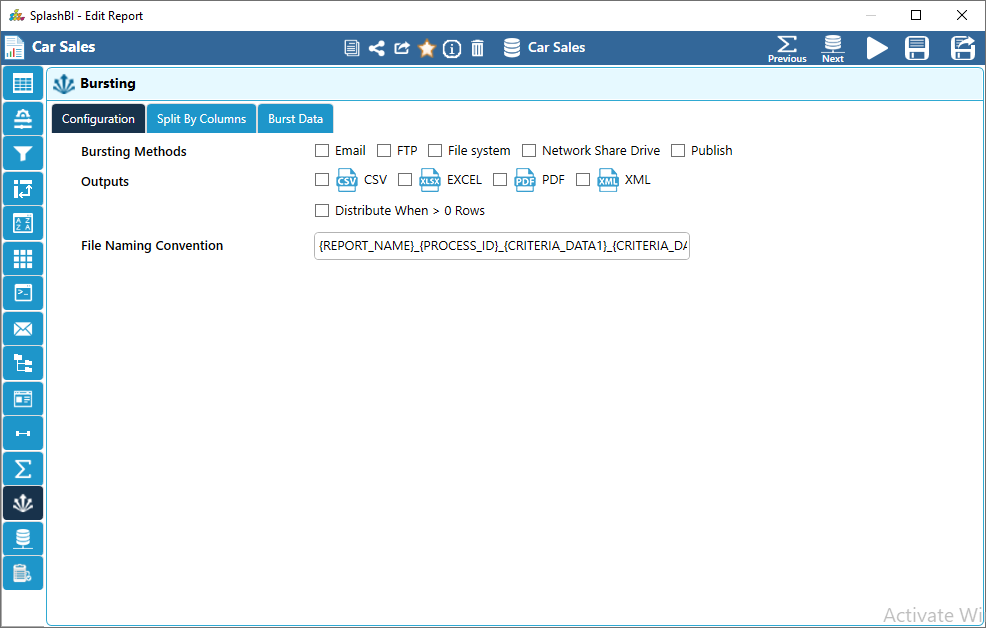
Configuration
In Configuration tab, user input values like the way bursting data reaches the intended user, i.e., via Email, File Transfer Protocol, File System and Network Share Drive. Check the option you wish to send the data through
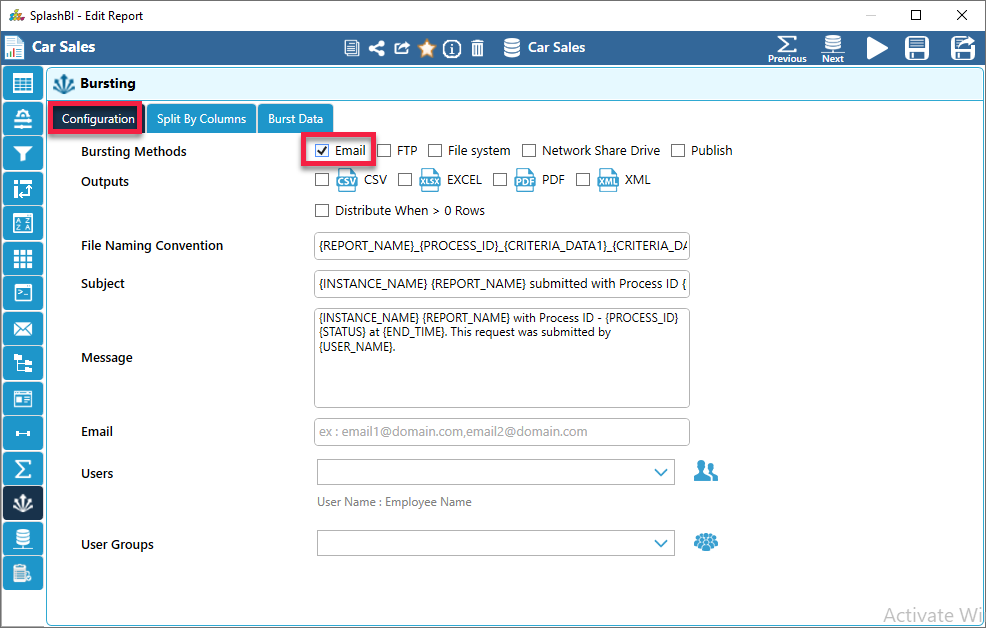
Checking Email will send the burst output via Email.
Enter subject that the end user will see when they receive the email in the Default Email Subject text box.
Enter the text the user will see when they receive the email in the Default Email Body text box.
You can use below enclosed codes in the email subject and body fields which will replaced dynamically in the process.
a. {REPORT_NAME}
b. {PROCESS_ID}
c. {TIMESTAMP}
Enter the emails of users that will receive the burst values.
If there are any user’s/user groups that contain emails enter them.
Checking FTP will send the burst output via FTP.
Provide FTP details and it will send the burst output via FTP.
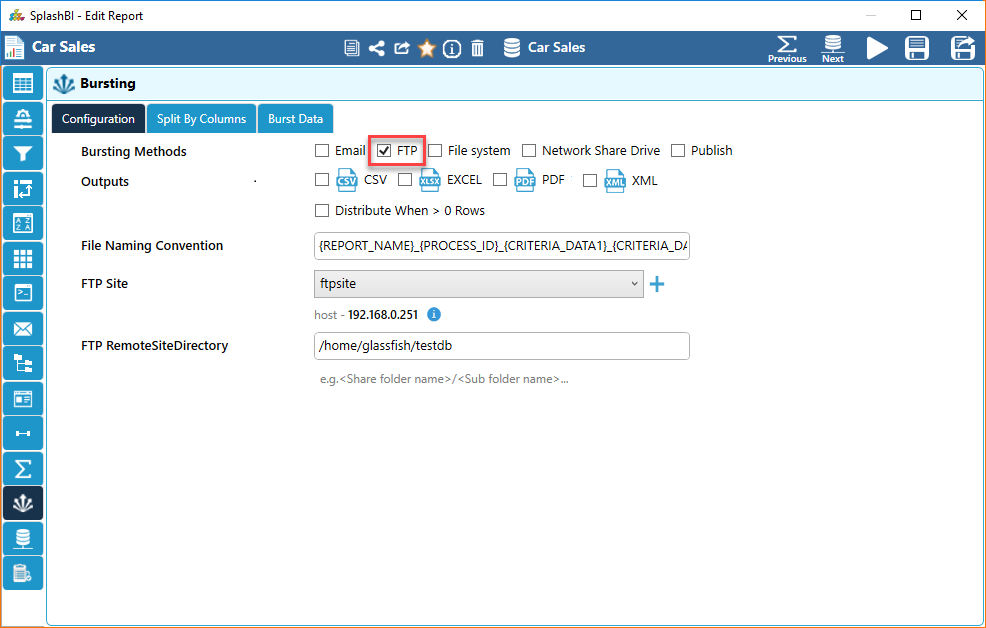
Checking File System will send the burst output via File System.
Provide File System URL and it will send the burst output via File System.
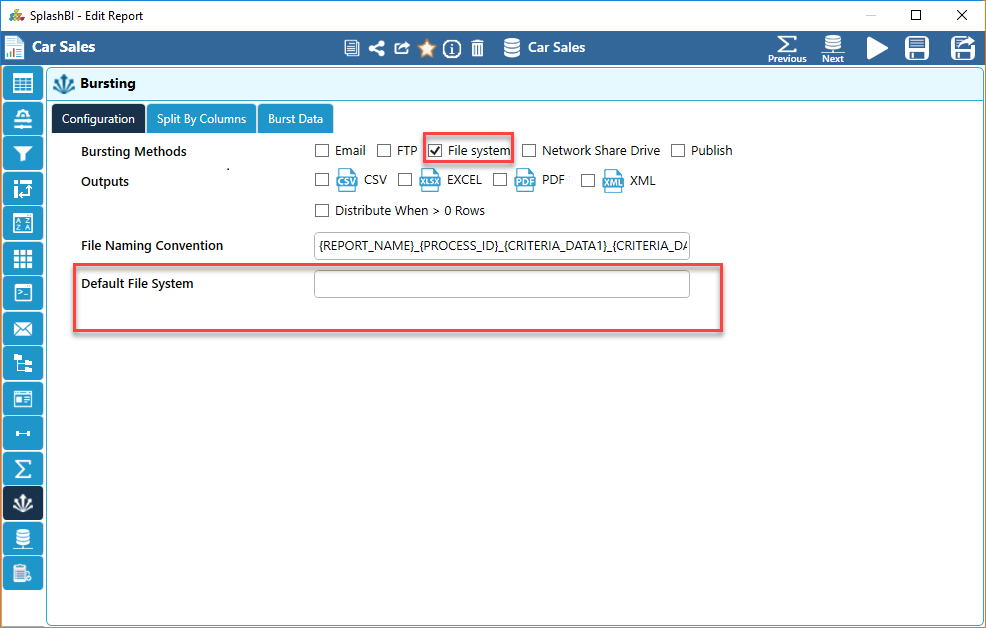
Checking Network Share System will send the burst output via Network Share Drive.
Provide Network Share drive path URL and it will send the burst output via Network Share Drive.
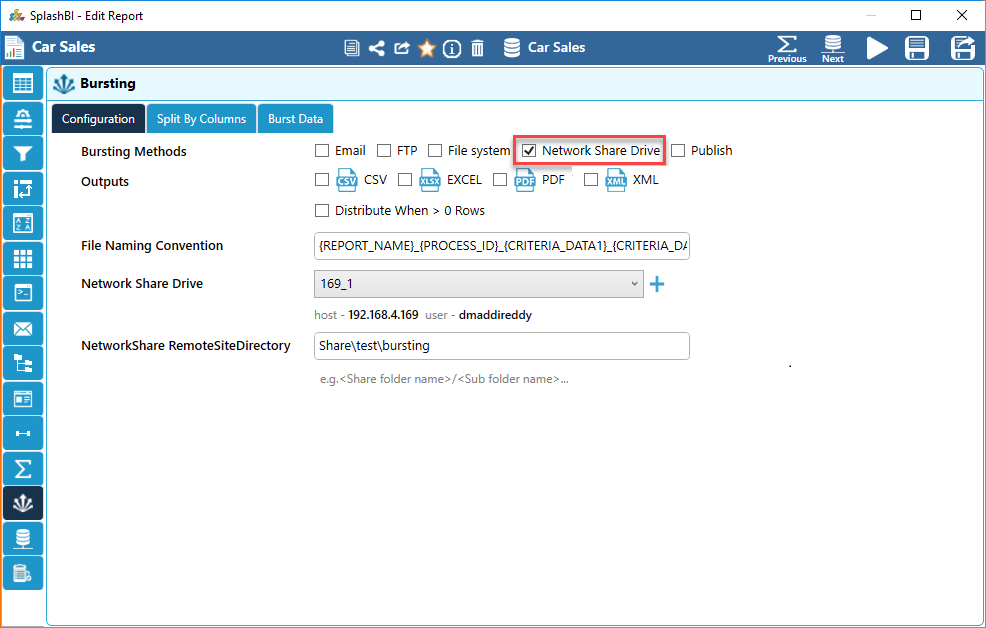
Publishing
Publishing is a process in which burst reports are published in the SplashBI application and the admin has the rights to control the quantity of the burst reports. Publishing reports helps to burst multiple reports to a user instead of sending then through Email, FTP or Network Share Drive.
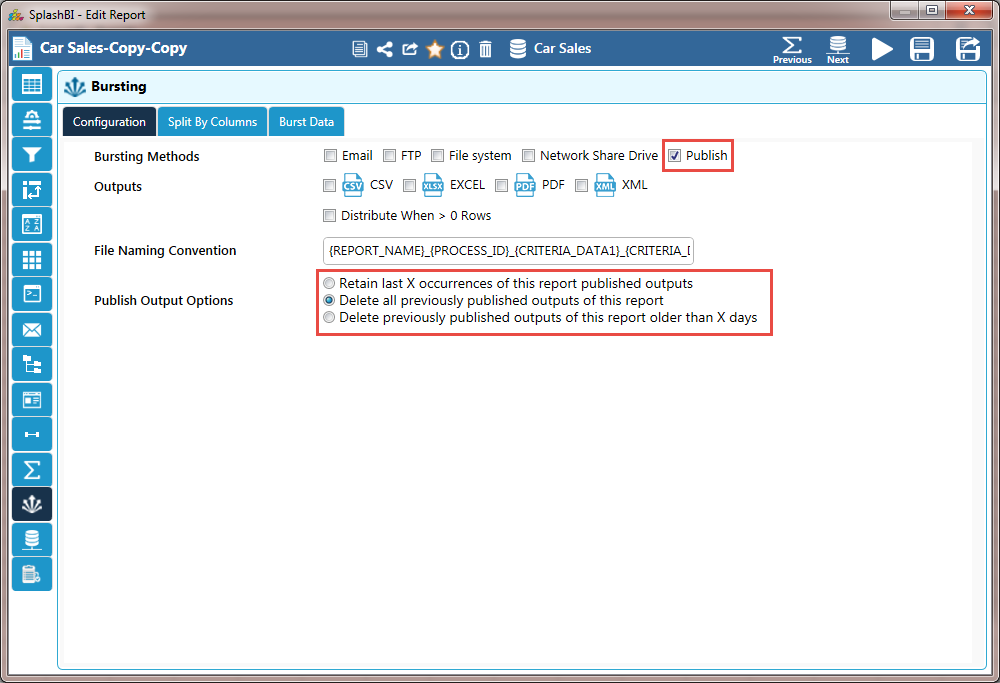
• Retain last X occurrences of this report published outputs
• Delete all previously published outputs of this report
• Delete previously outputs of this report older than X days
Here X is a number database that can be set. Clicking the 1st and 3rd options will display a text box to enter the number.
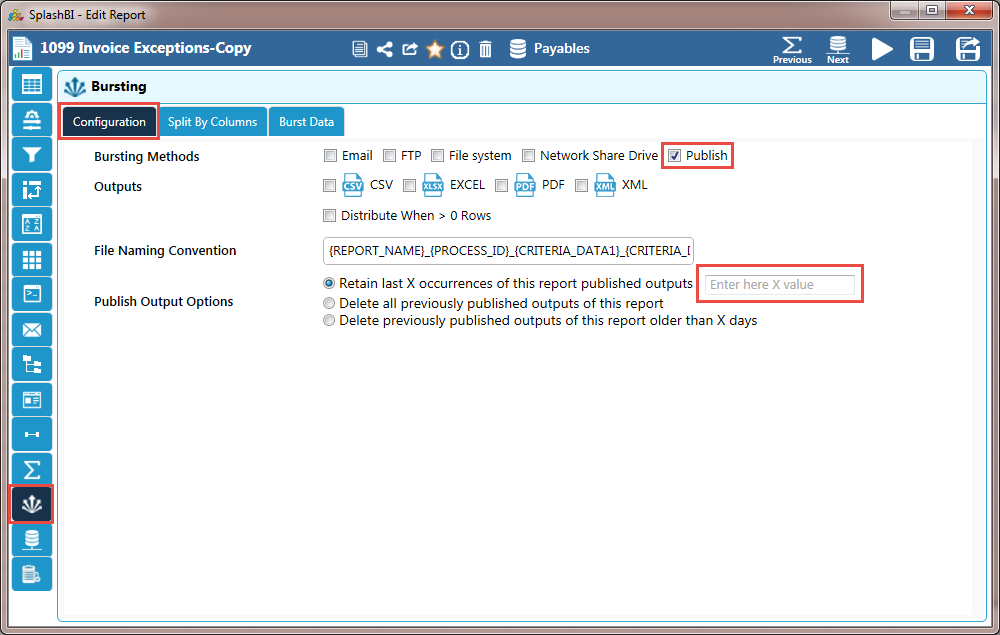

Click the Burst Data tab to publish the burst reports to the users with publish access.
Click the publish icon
In the following image select the users from the Publish Users panel and move them to the Published User panel using the arrows.
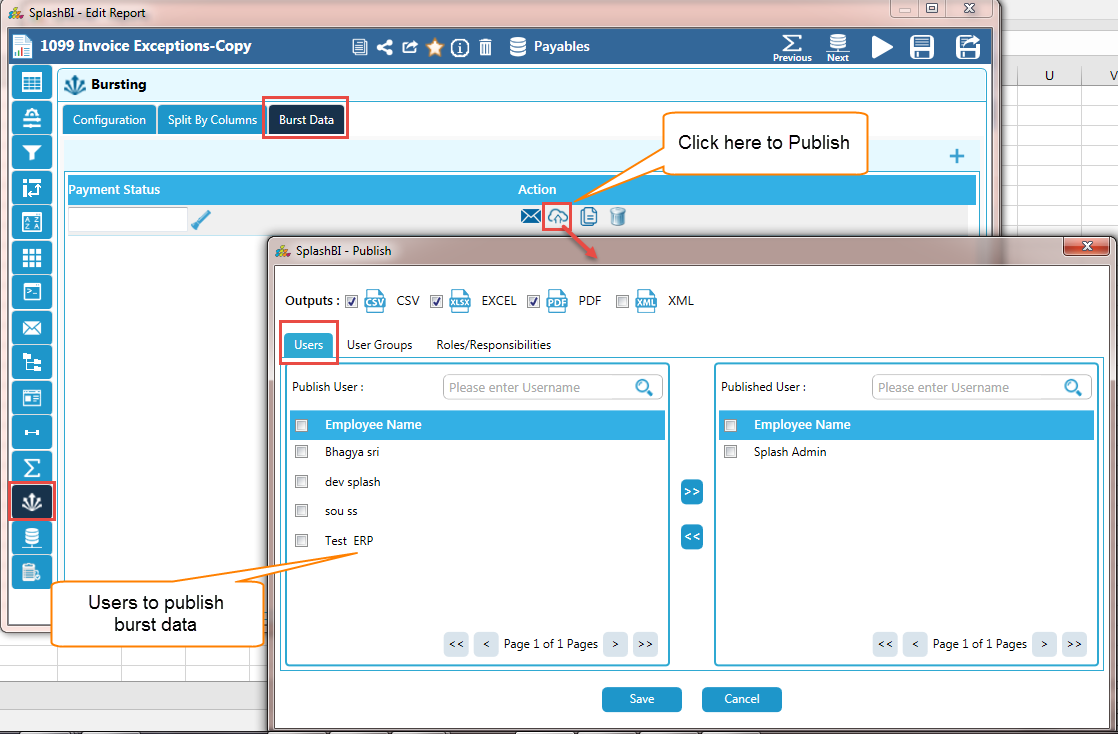
Click the Burst Data tab to publish the burst reports to the user groups with publish access.
Click the publish icon
In the following image select the user groups from the Publish User Groups panel and move them to the Published User Group panel using the arrows.
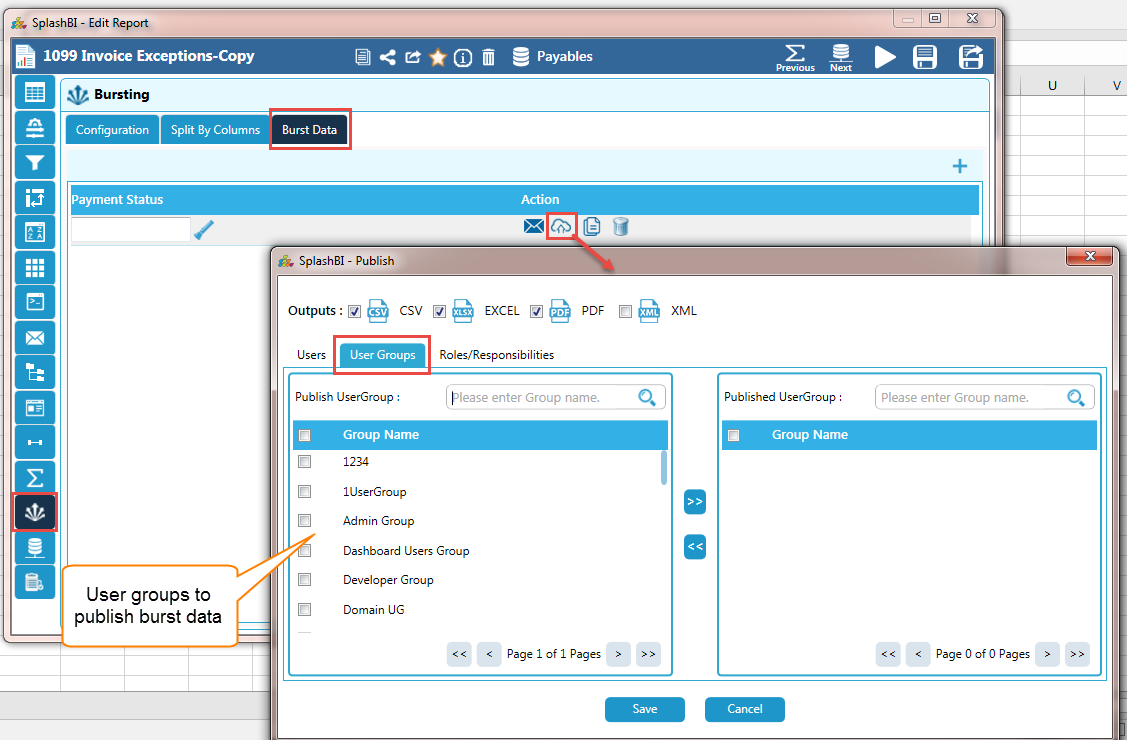
Click the Burst Data tab to publish the burst reports to the Roles/Responsibilities with publish access.
Click the publish icon
In the following image select the Roles/Responsibilities from the Publish Roles/Responsibilities panel and move them to the Published Roles/Responsibilities panel using the arrows.
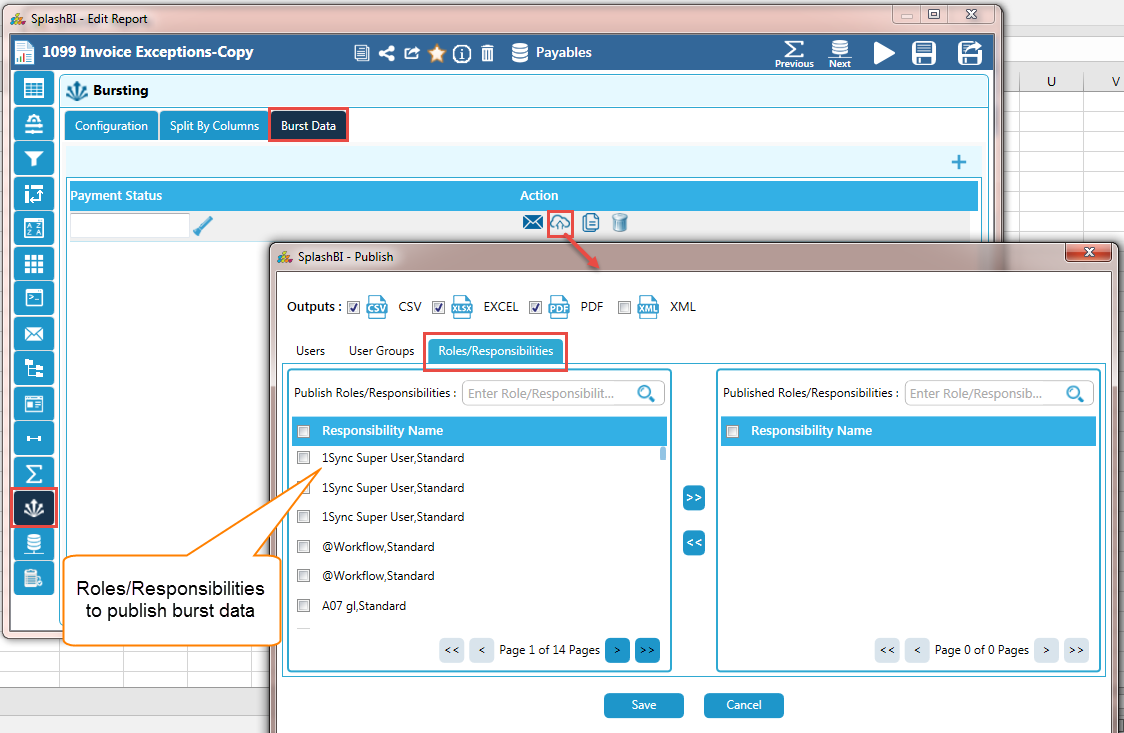
The published user, when logged in will be able to view, download, search and delete the burst reports. They can also refresh the page for new burst reports published. Apart from these action they do not access to anything else.
NOTE: The admin can create users exclusively for receiving published burst reports through the user creation functionality and checking the Publish option.
Split By Columns
You can choose the columns from which the values can be retrieved. By this process you filter columns.
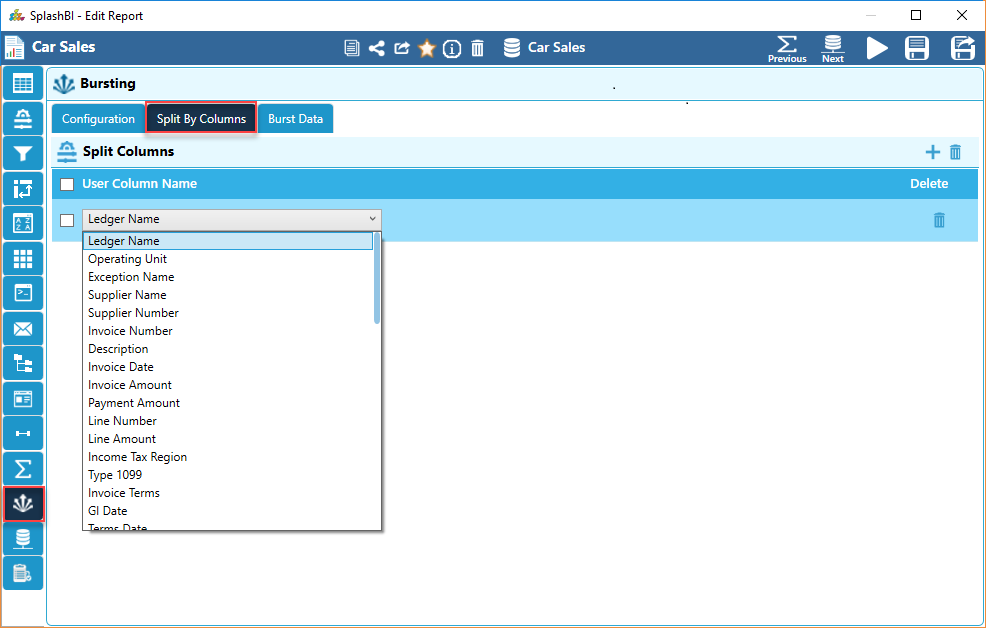
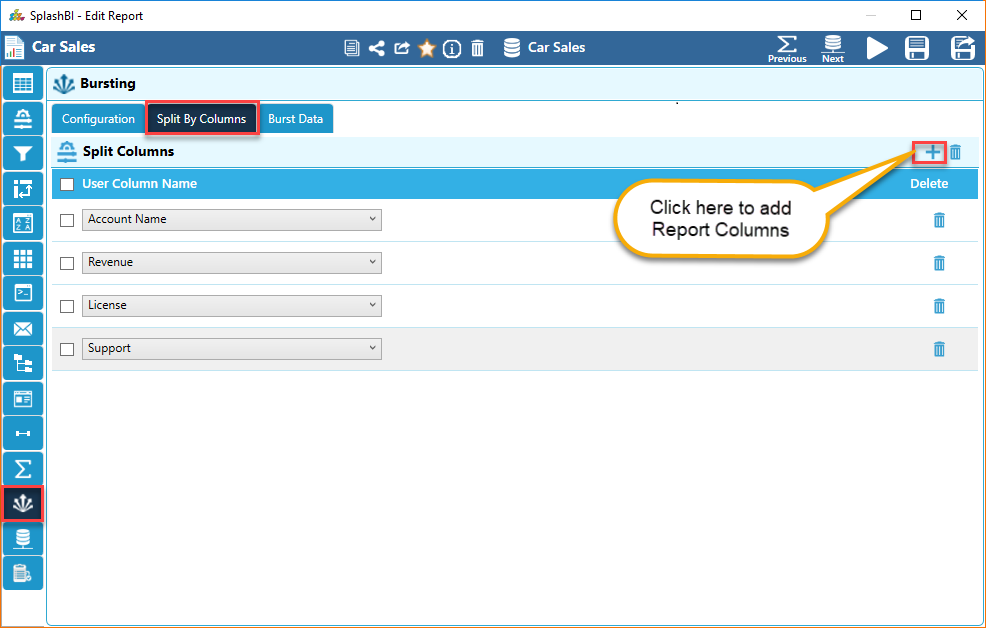
Click the plus sign to add a new column. Use the drop down to select the columns.
Click the bin icon to delete the column.
Burst Data
The Burst Data tab enables you to further filter down values. You can choose values from the columns that you have chosen in the previous tab. Once you save and run the report through bursting, then the filters given in this tab will be taken in to consideration during bursting process execution and output will be sent accordingly.

You can add a new burst data by adding the plus icon.
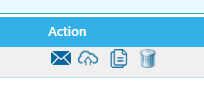
You can check/edit the bursting methods data by clicking the  icon
icon
Click the  icon to publish the burst output. For more information, see Publishing.
icon to publish the burst output. For more information, see Publishing.
Click the corresponding icons to view options like Copy and Delete.
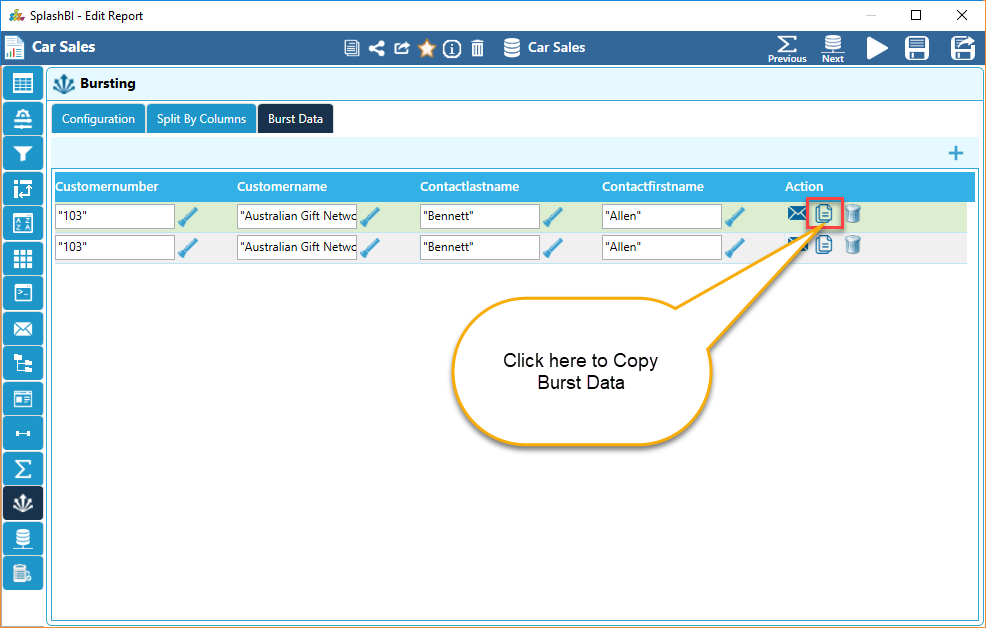
By criteria also user can burst for different users, user groups, ftp, file system. Otherwise default from configuration tab are considered. The burst data criteria distribution details will be loaded by default from configuration tab during initial creation but later on whatever saved once in criteria row will be considered. If a new record is added, then default will be loaded from configuration tab.
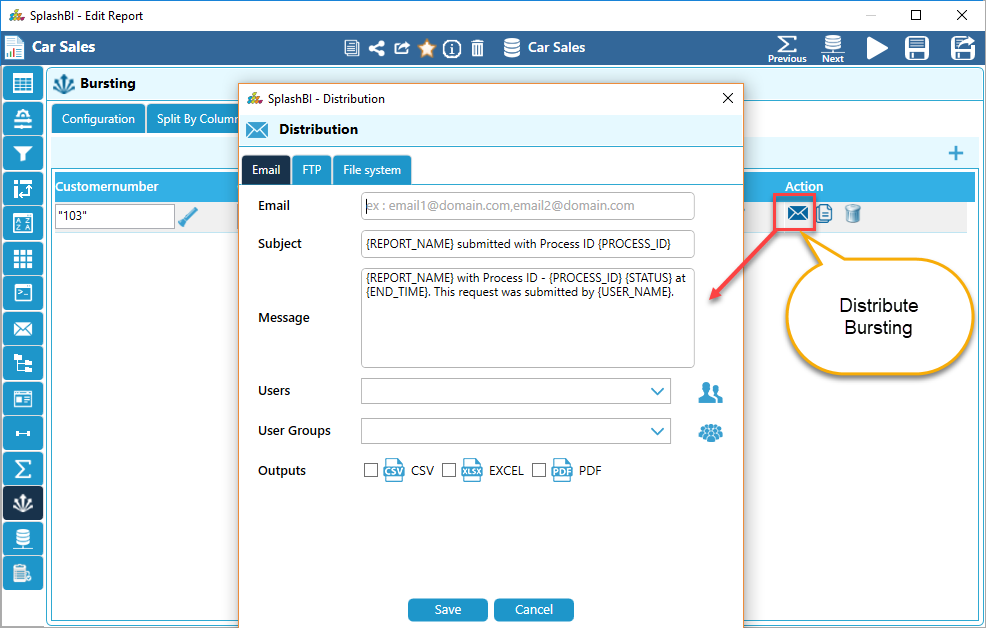
Click the  icon to search for entries within a selected column, as shown in the below image.
icon to search for entries within a selected column, as shown in the below image.

To continue with the tutorial, click here